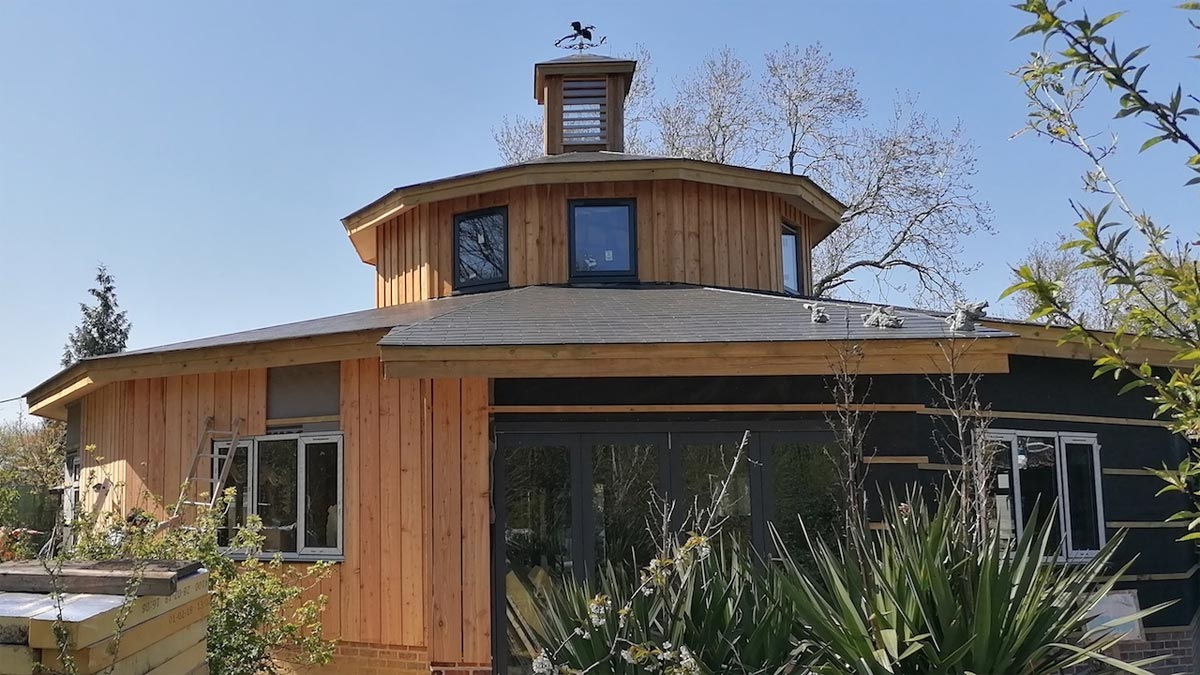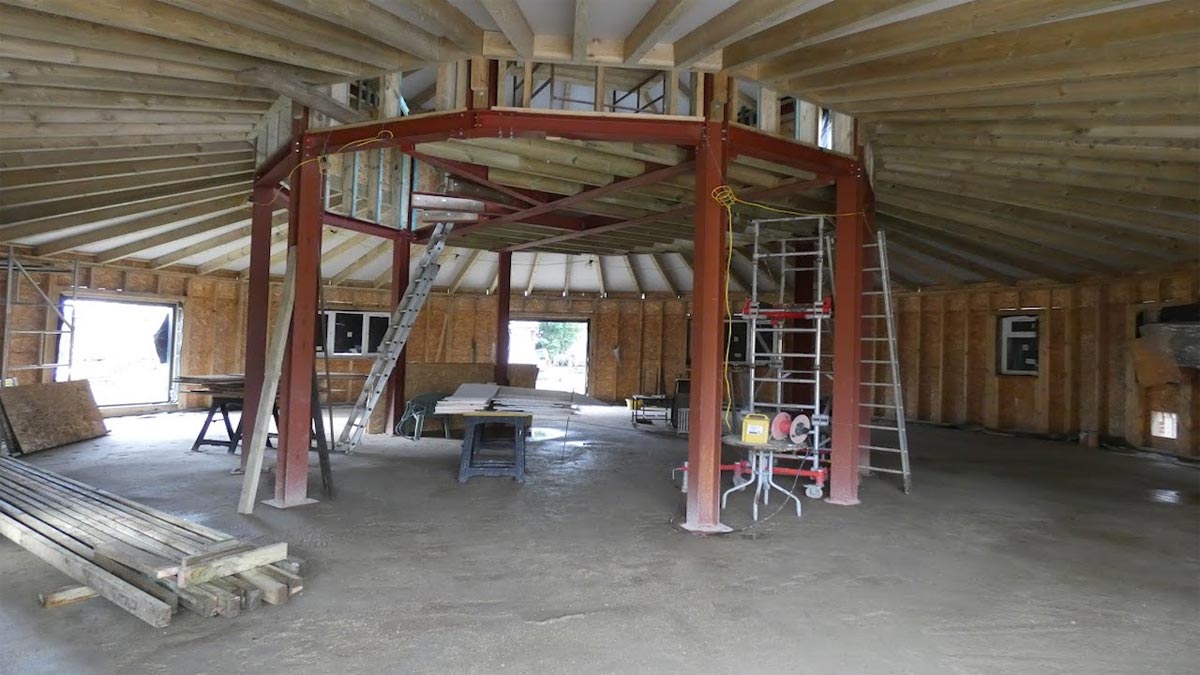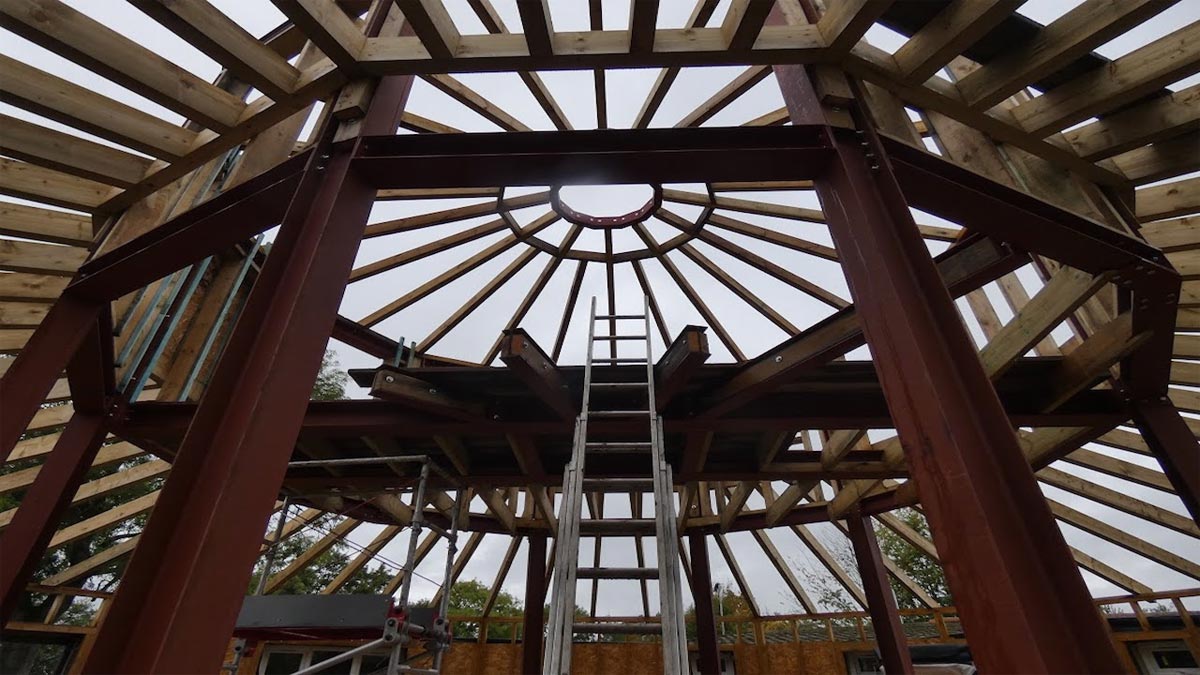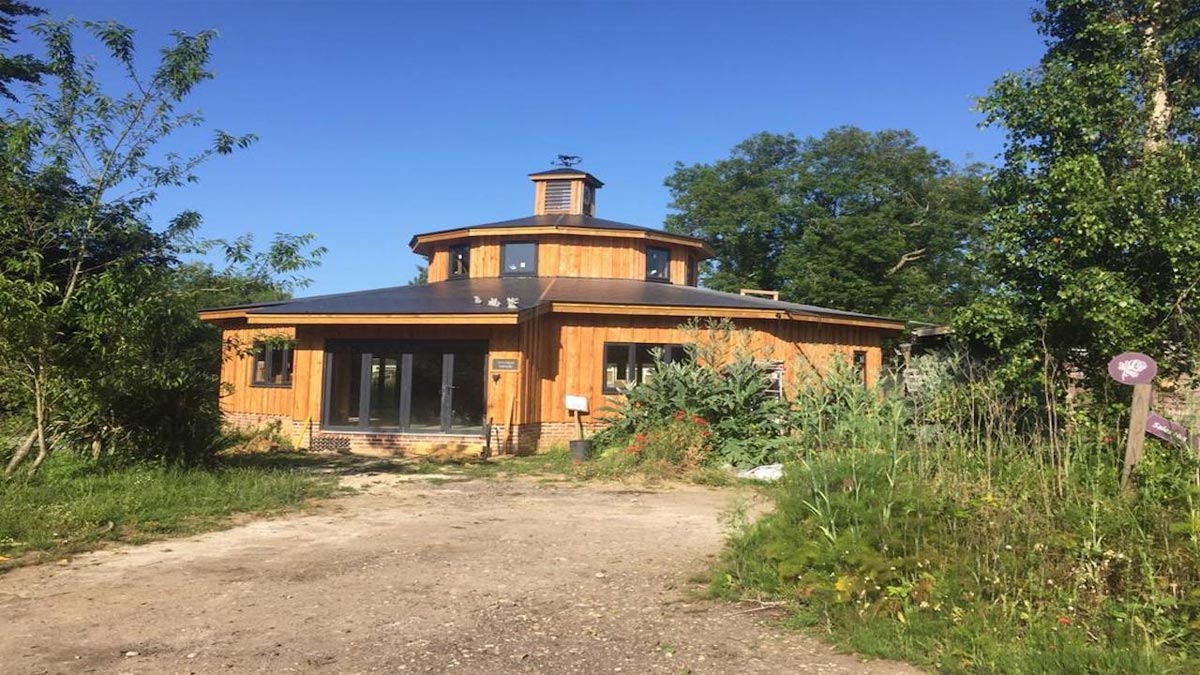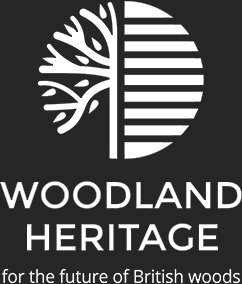In a sleepy hamlet in Norfolk lies this fabulous dodecagon shaped house vertically clad with beautiful native larch. This thermally insulated building with its superb design has an internal central supporting structure of steel. With a central upper floor and clock tower topped with a weather vane. It is the beautiful home of Julie and Eddie Krutysza owners of Hattens Farm Nursery where days are spent running the farm and tending their beautiful roses and plants.
Larch suits a more rustic cladding profile such as sawn feather edge or a waney edge. With care however British grown larch is also suitable for drying and machining to various cladding profiles. It’s ideal for exposed elevations as it’s both tough and durable. Left untreated, overtime it weathers to a beautiful silver grey. Northerly elevations may weather to a darker grey than those which are south facing. However, if an unweathered look is preferable, larch also takes exterior grade oils extremely well.
When compared to Siberian Larch, British grown Larch is typically warmer in appearance. Its colour ranges from a pinky brown in the heartwood to creamy-white in the sap band. With a characterful grain it has a good number of knots which appear scattered and frequent along the boards. It’s a quality cladding offering a rustic appearance and a great alternative where budget is a primary concern.
Initially very high in moisture it dries out relatively quickly, soon finding it’s ambient moisture level. Autumn is the optimum time to fit cladding, allowing a full three seasons to acclimatise before summer. It will shrink a little bit in the width but that’s what the overlapping profiles are about. They take up the slack and maintain weather tightness.
All in all a beautiful indigenous timber which is fully sustainable and easily sourced from well managed woodland and forestry throughout the UK.
